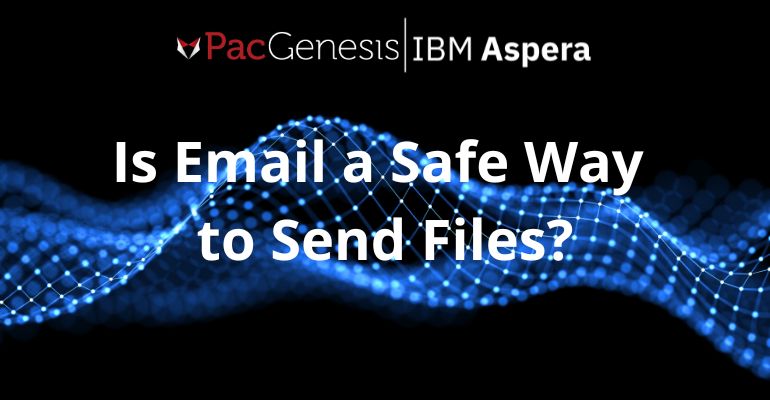Is Email a Safe Way to Send Files?

Is Email a Safe Way to Send Files?
Email remains one of the most common methods for sharing files in today’s digital workplace. Whether it’s contracts, presentations, or financial documents, we’ve all hit “attach” and “send” countless times. But as cyber threats evolve and data breaches make headlines, it’s worth asking: is email really a safe way to send files?
The short answer is complicated. While email can be relatively secure for basic file sharing, it comes with inherent risks that every business should understand.
The Reality of Email Security
Email wasn’t originally designed with robust security in mind. Most modern email providers use Transport Layer Security (TLS) to encrypt emails in transit, protecting messages as they travel between servers. However, this encryption only protects the message while it’s moving—not while it’s stored on servers or devices.
Once your email arrives, it typically sits unencrypted in the recipient’s inbox, creating a vulnerability window where sensitive files could be accessed through compromised accounts, stolen devices, or insider threats.
Key Risks of Email File Sharing
Interception and Data Breaches: While TLS encryption protects most email traffic, not all servers support it consistently. Email servers are attractive targets for cybercriminals because they contain vast amounts of valuable information. When compromised, attackers may access years’ worth of stored messages and attachments.
Account Takeovers: If someone gains unauthorized access to an email account through password attacks or phishing, they can access all stored emails and attachments. They might also use compromised accounts to send malicious files to contacts.
Human Error: Email makes it easy to accidentally send sensitive files to the wrong recipient. A simple typo or selecting the wrong contact can result in confidential information landing in unintended hands.
Compliance Challenges: Many industries have strict regulations about data transmission. Email’s lack of granular access controls and guaranteed encryption can make compliance with HIPAA, GDPR, or SOX difficult.
When Email Might Be Acceptable
Email isn’t always wrong for file sharing. It can be relatively safe for low-sensitivity documents, small files, or when sending to trusted recipients within your organization. Organizations using email encryption solutions also significantly improve their security posture.
Best Practices for Safer Email File Sharing
Use Strong Authentication: Enable two-factor authentication and maintain strong, unique passwords.
Encrypt Sensitive Files: Before attaching sensitive documents, encrypt them using tools like 7-Zip or built-in application encryption. Share passwords through separate channels.
Implement Email Security Solutions: Deploy solutions that provide automatic encryption, data loss prevention, and threat protection.
Avoid Descriptive Filenames: Use generic names or codes instead of obvious labels like “Confidential_Financial_Data.xlsx.”
Safer Alternatives
For organizations serious about data security, several alternatives offer better protection:
Cloud-Based Platforms: Services like Microsoft OneDrive for Business, Google Drive for Work, and Dropbox Business provide secure sharing with access controls, audit trails, and revocation capabilities.
Secure File Transfer Solutions: Enterprise-grade platforms like Citrix ShareFile offer robust security with end-to-end encryption and detailed access controls.
Virtual Data Rooms: For highly sensitive transactions, these provide maximum security with document watermarking and granular permissions.
Making the Right Choice
The decision should be based on careful risk assessment, compliance requirements, and data sensitivity. Organizations should conduct risk assessments, develop clear policies specifying when email is acceptable, invest in appropriate technology, and regularly monitor file sharing practices.
How to Improve File Sharing Practices
Email can be convenient for file sharing, but it’s not the most secure option available. For sensitive information, organizations should consider more robust alternatives that provide better encryption, access controls, and audit capabilities.
The key is understanding your risk profile and making informed decisions about when email is appropriate. In today’s threat landscape, the question isn’t whether you can afford to implement better file sharing security—it’s whether you can afford not to. At PacGenesis, we help organizations evaluate their file sharing practices and implement secure solutions that protect sensitive data while maintaining productivity. Contact us today to learn how we can strengthen your organization’s approach to secure file sharing.




